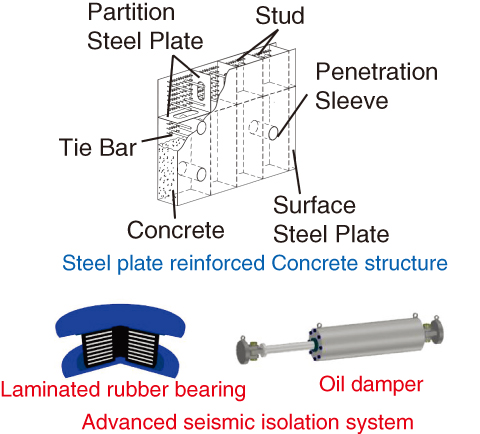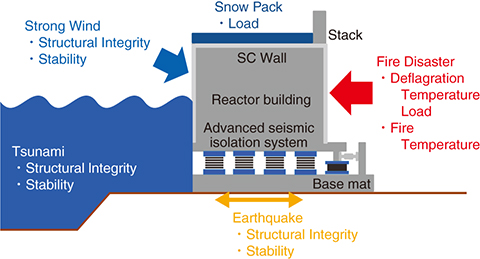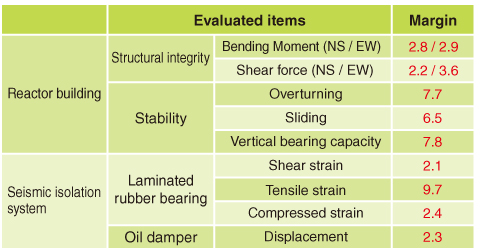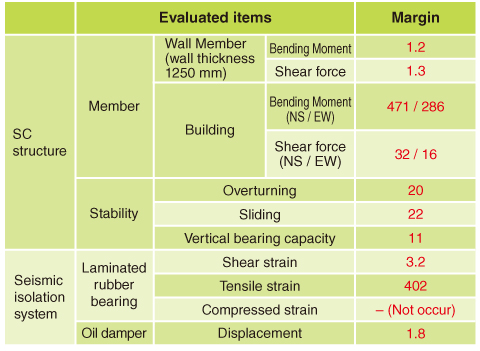
Fig.7-4 Steel plate reinforced concrete (SC) structures and the advanced seismic isolation system

Fig.7-5 Evaluated external hazards
Table 7-1 Results of structural integrity evaluation of a reactor building and seismic isolation system against an earthquake

Table 7-2 Results of structural integrity evaluation of a reactor building and seismic isolation system against a tsunami

A steel plate reinforced concrete (SC) structure has been considered for the building wherein the sodium-cooled fast reactor (SFR) is housed. The SC structure comprises a pair of steel plates with a concrete filling in between, held together by studs, etc. In addition, an advanced seismic isolation system with laminated rubber bearings and oil dampers has been investigated for adoption against earthquakes (Fig.7-4).
In response to the Great East Japan Earthquake and the accident at the TEPCO’s Fukushima Daiichi NPS in March 2011, the structural integrity and stability of reactor buildings against external hazards have been re-evaluated. Fig.7-5 shows the evaluations for earthquake, tsunami, snowpack, strong wind, and fire. These external hazards are threats to the structural integrity and stability of the reactor building; hence, to protect the safety of a reactor building, it must be constructed in such a way as to withstand them. In fact, it is necessary to ensure that loads due to earthquakes and tsunamis do not damage an outer wall nor affect the reactor building inside.
The results of the evaluation against earthquake and tsunami are shown in Tables 7-1 and 7-2, respectively. They show that the structural integrity of a reactor building can presumably be maintained with appropriate wall thickness, and that seismic or tsunami loads do not lead to the reactor building being damaged. Evaluation results were also obtained showing that structural integrity could be maintained against other evaluated events, such as snowpack, strong wind, and fire.
This study includes some of the results of the “technical development program on a commercialized FBR plant” entrusted to Japan Atomic Energy Agency (JAEA) by the Ministry of Economy, Trade and Industry of Japan (METI).